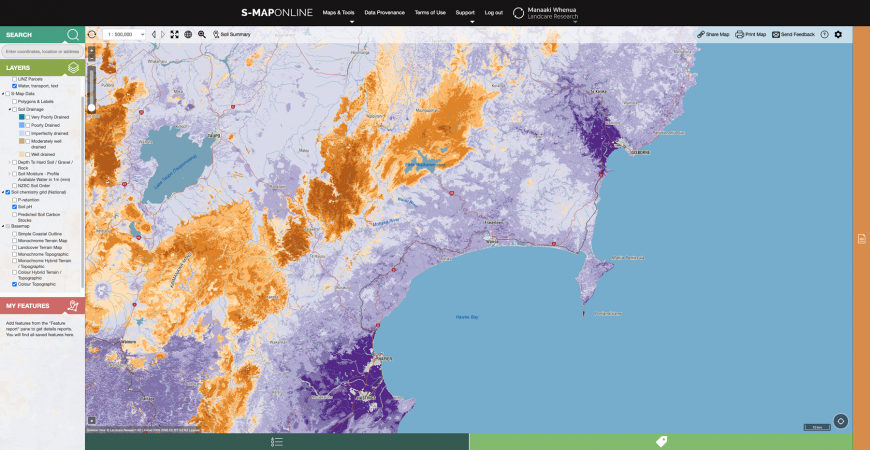Understanding soil pH is critical for farmers, for the fertiliser industry, for soil ecology, for land-use classification, and for effective land management. Manaaki Whenua’s online Land Resource Information Systems (LRIS) database already includes a soil pH data layer, mapping the whole of New Zealand at a scale of 1:50,000, as part of the Fundamental Soil Layers (FSL). Those layers were based on a combination of stereoscopic analysis of aerial photographs, expert knowledge, and field measurements built up over the past 30 years. However, they are known to need refinement – particularly because their measurements of soil pH are largely confined to the 20–60-cm soil depth.

New maps show soil pH for New Zealand at a variety of soil depths.
In response to a growing need for better soil pH information, Pierre Roudier and colleagues at Manaaki Whenua have developed a new method to digitally map soil pH at high resolution (100 m) across New Zealand. The work was supported by SSIF funding from MBIE.
To create the new maps, soil pH information for New Zealand was collated from a wide range of datasets, including soil surveys, soil quality programmes, wetland monitoring programmes, and soil biodiversity research programmes. The main dataset was the National Soil Data Repository, which contributed around half of the 12,000 soil sampling points. The complete dataset was then processed through data augmentation, a statistical technique that is also used in machine learning. The process created a much larger and more robust master dataset for a soil pH model to be calibrated, including richer information about depth variations. The process also took into account uncertainties within the data.
Comparison with existing soil pH maps showed that this new digital soil mapping method significantly out- performed existing soil pH information for the country. It is now available in LRIS alongside the original data layers, as well as on S-map.
According to Dr Roudier, this new soil pH map is a significant improvement on the currently available soil pH information for New Zealand. ‘The new layer has allowed us to explore new ways to model soil properties in 3D, not only across the landscape, but also with depth, which will benefit future modelling of other important soil properties.’

